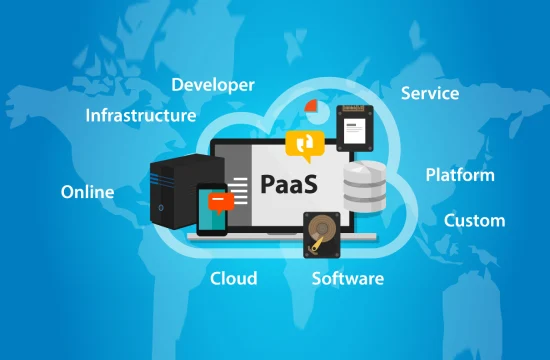What is a Platform as a Service (PaaS)?
Platform as a Service (PaaS) is a cloud computing model that provides developers with a complete environment to build, deploy, and manage applications without dealing with the underlying infrastructure. It offers a set of tools, development frameworks, and cloud-based services that streamline the application development lifecycle, enabling businesses to focus on coding and innovation rather than infrastructure management. PaaS provides a platform that includes computing resources, networking, storage, operating systems, and middleware, all managed by the cloud provider. This allows developers to create, test, and deploy applications faster while reducing operational complexities.
One of the key benefits of PaaS is its ability to provide a scalable and flexible development environment. Developers can access pre-configured development tools, databases, and APIs that enable faster prototyping and deployment. With PaaS, organizations no longer need to worry about maintaining servers, configuring networks, or handling software updates, as these tasks are managed by the provider. This not only reduces IT overhead but also ensures that applications run on the latest and most secure infrastructure.
PaaS is widely used in various industries and by businesses of all sizes. Startups benefit from its cost-effectiveness and ability to quickly build and deploy applications without a significant upfront investment in hardware or software. Large enterprises leverage PaaS for application modernization, microservices development, and integrating AI and machine learning capabilities into their products. By providing built-in tools for collaboration, PaaS enables development teams to work seamlessly, even in distributed or remote work environments.
Another advantage of PaaS is its ability to support multiple programming languages, frameworks, and database options. This flexibility allows developers to choose the best technology stack for their applications while ensuring compatibility with existing systems. Additionally, PaaS solutions often come with automation capabilities, enabling continuous integration and continuous deployment (CI/CD),which helps streamline development workflows and improve efficiency.
Security and compliance are crucial considerations when using PaaS. Most leading PaaS providers implement robust security measures such as data encryption, access controls, and threat monitoring to protect applications and sensitive information. However, organizations must also take proactive security measures by implementing best practices in application development and access management.
Overall, Platform as a Service is a game-changer for businesses looking to accelerate digital transformation. By abstracting infrastructure complexities, PaaS enables companies to build and deploy applications faster, scale efficiently, and drive innovation in a cost-effective manner. As cloud adoption continues to grow, PaaS is expected to play a vital role in shaping the future of software development.
Key Benefits of Using PaaS
Platform as a Service (PaaS) offers numerous advantages that make it an attractive choice for businesses and developers looking to streamline application development, reduce costs, and improve scalability. By providing a fully managed development environment, PaaS eliminates the need for organizations to maintain and configure hardware, operating systems, and networking infrastructure. Instead, developers can focus on writing and deploying code, leading to increased efficiency and innovation.
One of the key benefits of using PaaS is its ability to accelerate the development process. With pre-configured development tools, frameworks, and APIs, teams can build applications faster without spending time on setup and configuration. PaaS environments often include integrated development environments (IDEs),version control systems, and automated deployment tools, making it easier to collaborate and deploy applications in a structured and efficient manner. Additionally, many PaaS solutions support continuous integration and continuous deployment (CI/CD) pipelines, enabling automated testing and faster release cycles.
Cost savings is another major advantage of PaaS. Traditional on-premises infrastructure requires significant investment in hardware, software licenses, maintenance, and IT personnel. PaaS eliminates these costs by offering a pay-as-you-go pricing model, where businesses only pay for the resources they use. This model makes it particularly appealing for startups and small businesses that need access to high-quality development tools without the financial burden of maintaining physical infrastructure. Furthermore, because PaaS providers handle system updates, security patches, and infrastructure scaling, businesses can allocate their IT budgets more efficiently.
Scalability and flexibility are also major strengths of PaaS. Whether a business is experiencing rapid growth or fluctuating demand, PaaS solutions allow applications to scale automatically based on usage. Cloud providers offer elastic computing resources that adjust dynamically, ensuring applications run smoothly even during peak traffic periods. This level of flexibility is crucial for businesses that require high availability and performance without over-provisioning resources.
Security and compliance are also key considerations, and PaaS providers implement stringent security measures such as data encryption, automated backups, identity and access management (IAM),and threat monitoring. Many PaaS solutions are designed to comply with industry regulations such as GDPR, HIPAA, and SOC 2, helping businesses meet their security and compliance requirements without additional effort.
Another benefit of PaaS is its ability to foster collaboration among development teams. Because PaaS is cloud-based, developers, designers, and testers can work on projects simultaneously from different locations. Built-in collaboration tools, version control, and shared environments make it easier to manage code, track changes, and ensure smooth communication across teams.
By offering a comprehensive development environment, PaaS enables organizations to innovate faster, reduce operational overhead, and deploy applications with greater efficiency. As cloud computing continues to evolve, PaaS is expected to play an increasingly vital role in shaping the future of software development.
PaaS vs IaaS vs SaaS: Understanding the Differences
Platform as a Service (PaaS),Infrastructure as a Service (IaaS),and Software as a Service (SaaS) are three key cloud computing models that serve different purposes. Understanding the differences between these models helps businesses and developers choose the right solution based on their needs, budget, and technical requirements. While all three provide cloud-based resources, they vary in terms of control, flexibility, and management responsibilities.
Infrastructure as a Service (IaaS) is the most flexible of the three models, offering virtualized computing resources such as servers, networking, and storage. It allows businesses to build and manage their own IT infrastructure in the cloud without investing in physical hardware. IaaS provides a high level of control, enabling users to install their own operating systems, configure environments, and scale resources as needed. This model is ideal for organizations that require full customization of their infrastructure, such as large enterprises, development teams running complex workloads, and businesses with fluctuating computing demands. Some of the leading IaaS providers include Amazon Web Services (AWS),Microsoft Azure, and Google Cloud Platform (GCP).
Platform as a Service (PaaS) builds upon IaaS by providing a complete development and deployment environment that includes infrastructure, middleware, runtime environments, and development tools. With PaaS, developers can focus on coding and application logic rather than managing servers, storage, and networking. PaaS solutions typically include pre-configured frameworks, APIs, databases, and automation tools, allowing for faster application development and deployment. This model is particularly beneficial for software development teams, startups, and enterprises looking to streamline their development workflows without the burden of managing infrastructure. PaaS platforms like Google App Engine, Microsoft Azure App Services, and AWS Elastic Beanstalk are popular choices for businesses that want to accelerate software development.
Software as a Service (SaaS) is the most user-friendly cloud model, offering fully developed and maintained applications that run on cloud infrastructure. SaaS solutions are accessed via web browsers and do not require users to manage installation, updates, or maintenance. This model is widely used for business productivity tools, customer relationship management (CRM),enterprise resource planning (ERP),and communication platforms. Popular SaaS applications include Google Workspace, Salesforce, Dropbox, and Microsoft 365. SaaS is ideal for businesses looking to reduce IT complexity while gaining access to feature-rich software without extensive setup.
The primary difference between IaaS, PaaS, and SaaS is the level of control and responsibility. IaaS provides the most flexibility, requiring businesses to manage everything from the operating system to applications. PaaS simplifies development by handling infrastructure and runtime environments while allowing developers to focus on building applications. SaaS eliminates the need for management entirely, offering ready-to-use software solutions. Choosing the right model depends on an organization’s technical expertise, scalability needs, and business objectives. By leveraging the appropriate cloud computing model, businesses can optimize efficiency, reduce costs, and enhance their digital transformation efforts.






